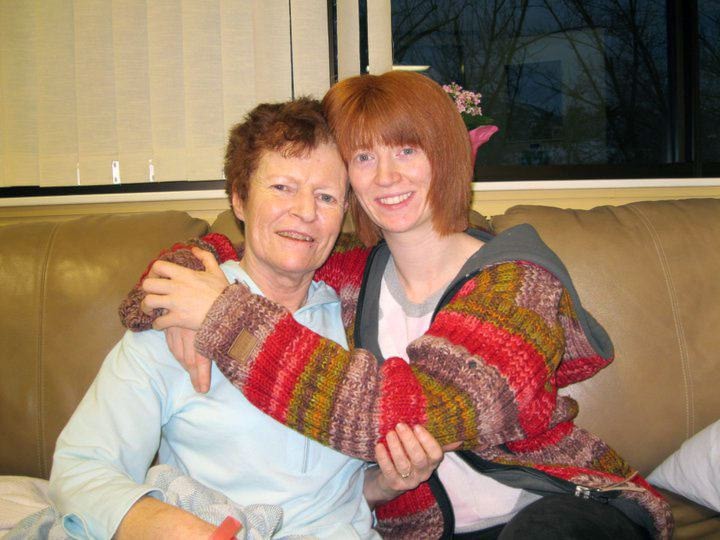Christine Robertson believes living in Castlegar may be hazardous to her family’s health after a recent experience transferring between hospitals in the region.
“I phoned my mom one morning and she sounded really funny so I went to her house and she looked like she had a stroke,” Robertson said.
Robertson’s mother, Fiona Drayton, was taken to the Castlegar and District Community Health Centre for initial treatment on Jan. 27. After that, she was to be transferred to the Kootenay Boundary Regional Hospital in Trail, a process which Robertson said took four and a half hours.
“In that time more brain damage was being done,” she said of her mother’s brain bleed.
It then took another nine hours, she added, before Drayton was transferred to Kelowna General in order to see a neurosurgeon.
Robertson said she was told two to three hours is the standard time that it takes to transfer patients from Castlegar to Trail, but Brent Hobbs, regional director for patient transport with Interior Health, said it varies from case to case.
“It's a complex question because it very much depends on the needs of the individual patient,” he said. "If you take a heart patient for example, who's having a heart attack, in most facilities we can start basic treatment and look to transferring the patient."
Hobbs said in Drayton’s case, there was no choice but to transfer her to Kelowna via ambulance.
“It was late in the afternoon when we identified the need to move her to Kelowna General, so it would be in the patient's best interest if we could, to fly, but unfortunately at Kootenay Boundary, flying in and out of the valley is tricky especially when we're losing daylight,” Hobbs said.
But Robertson said the wait times are unacceptable.
“All the doctors — the ICU doctor, the neurosurgeon in Kelowna — all said, 'why did it take so long to get to her?'”
Both Robertson and Hobbs confirmed Interior Health has launched an investigation as to why it took so long to transfer Drayton from the Kootenay Boundary Regional Hospital to Kelowna General.
"When a case like this comes up it's a good time for us to reflect on how we managed the case,” Hobbs said.
Sometimes ambulance attendants — or even patients themselves — know they’ll need to be transferred from Castlegar to Trail, but by rule they typically have to go to the Castlegar and District Community Health Centre first.
“The ambulance policy is to transport the patients to the nearest hospital that meets the needs of those patients,” Hobbs said, “because Castlegar Health Centre can start the treatment right away.”
• • •
Two years ago, Tom Tarasoff was playing in the Castlegar Golf Club’s Dinosaur Invitational when he collapsed early in the morning.
His wife, Sally, was appalled to learn the ambulance took him to Castlegar’s health centre instead of straight to Trail, seeing as Tom had undergone open-heart surgery just a year earlier.
She said it was learned after X-rays that Tom now had an abdominal aneurysm.
“Normally with a ruptured aneurysm you have an hour to live,” Sally said.
They then had to wait for the critical care team to transport him to Trail.
“If [the X-ray technician] would have stood him up (for the X-ray) she would've killed him,” Sally said.
Hobbs said often transport wait times are a result of waiting for a patient to stabilize, as may have been the case in the Tarasoff’s experience.
“The last thing we want to do is put an unstable patient in an ambulance for transport,” he said.
By the time Tom was taken to the Kootenay Boundary Regional Hospital and had received a CT scan, Sally said it had been four hours.
“So then they proposed driving him to Kelowna, but fortunately the critical care team was there and they said they'd fly him,” she said.
After Tom arrived at Kelowna General Hospital, he spent a total of seven weeks there, including four weeks in a coma.
“My biggest issue with this whole thing was, when time was of the essence, the decision of which hospital to go to, I believe our paramedics should have the ability to decide,” Sally said. “When you pick up a person who has a history, they should be forced to take them to a hospital where they have the proper diagnostic abilities, instead of taking them to a health centre where they can do nothing for you.”
Hobbs said there are some cases, however, where smaller health centres like Castlegar can be bypassed.
“For patients that are in major traumatic accidents, there are bypass procedures in place, because you know at the end of the day, those multiple injuries need to be managed in a facility that has, for example, a surgeon,” he said.
But Sally thinks paramedics should be given more credit and the ability to make those decisions themselves in more situations.
“Our paramedics deal with this stuff on a daily basis, and I think they have the ability to make the appropriate call nine times out of 10,” she said. “If you're walking and talking you can go to Castlegar, but anything else you should go to Trail, especially when it's a matter of life and death.”
Both stories did have a happy ending — Robertson’s mother is now recovering out of hospital, and Tom is back to his daily life.
But neither wants to take another chance if a similar situation arises.
